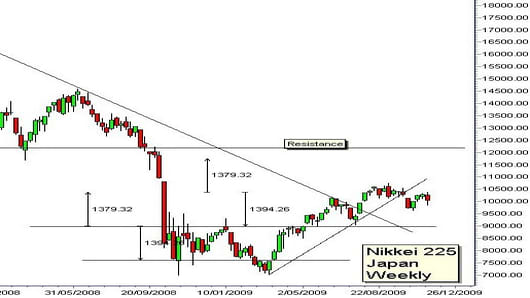There is now a high probability the market will trade in a consolidation pattern between support near 9000 and resistance near 10500. Support near 9000 is well defined so there is a low probability the market will drop below this. If this does happen, then the next downside target is near the support level at 7500.
The Nikkei shows an truncated pattern of trend breakout, recovery, consolidation and trend failure. Other regional markets follow the same behavioral pattern, but they have shown much more vigor. They have achieved trading and projection targets two to four times the height of the original trading band.
The Nikkei 225 has become the old man of the region. It follows other markets, but at a much slower pace.
If you would like Daryl to chart a specific stock, commodity or currency, please write to us at ChartingAsia@cnbc.com. We welcome all questions, comments and requests.
CNBC assumes no responsibility for any losses, damages or liability whatsoever suffered or incurred by any person, resulting from or attributable to the use of the information published on this site. User is using this information at his/her sole risk.




